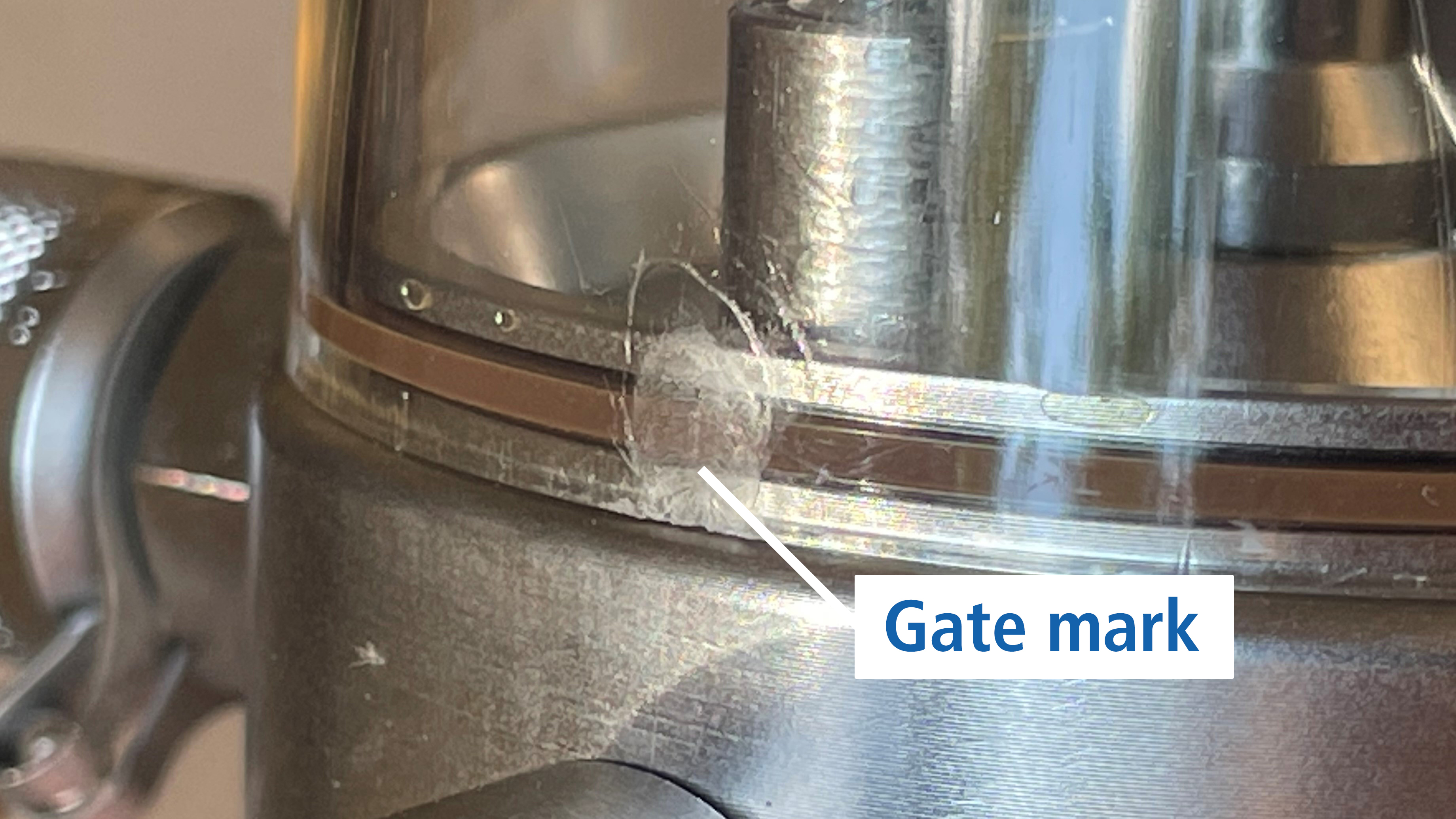The reservoir bodies on all our pumps are made from a rigid, high-strength, transparent plastic that offers high heat resistance and performs well in a broad temperature range. It’s called Polysulfone, and because it also retains its mechanical properties when exposed to steam, grease, solvents and chemicals, it’s also regularly used in the manufacturing of medical instruments, food and beverage processing machinery, aircraft instrumentation, and even motorcycle visors.
As with all plastics, manufacturing with polysulfone involves injection molding, the process of heating the material until it’s hot enough to flow, and then injecting it into a mold through a small opening called a "gate." Once it’s ejected from the mold, a small lump of plastic usually remains attached to the gate that gets trimmed away by hand. In the case of our reservoir bodies, some have more material removed than others which creates the appearance below.
